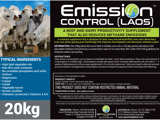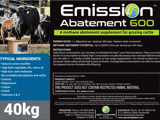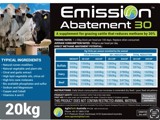Increasing livestock productivity.
Reducing methane emissions.

Food security, increasing livestock production, reducing methane.

The Target
Our goal is to increase beef and dairy productivity in developing nations, which will improve food security, improve farmer wealth and reduce methane emissions at the same time.
There are more than 1.5 billion cattle globally.
Approximately 1.1m cattle are in developing nations, contributing to a higher level of methane production due to poor animal nutrition and low feed quality.
We know that better bovine feed utilisation via high-quality feed supplements improves production and impacts emissions.
As reported by the United Nations, if we could reduce their methane production by 30% it could lower the earth's temperature by 0.2 degrees. AgCoTech believes that developing nations hold the key to an immediate and effective reduction of the earth's temperature. (UN Global Methane Assessment Report 2021 below)
https://www.ccacoalition.org/en/resources/global-methane-assessment-full-report
In developing countries, through improved beef and dairy nutrition, AgCoTech with its patented and proven technologies can reduce methane output up to 40% of CO2e per animal, per year.


Less than 15% of animals globally have access to consistent high-quality feed.
15%

More than 85% of the global cattle population are found on rangeland and extensive grazing environments.
85%

Reducing cattle methane production across developing nations by just 10% can prevent 100 million tonnes of CO2e from entering the environment per year.
10%

The Solution
Introducing The Medicated Lick Block
AgCoTech have developed proprietary technology which improves cattle productivity and welfare and reduces methane production by up to 40%.
- We produce a range of medicated lick blocks (The Block) containing high quality nutrients and various active methane mitigants that are tailored for different environments, seasons, and cattle types.
- It improves the animal’s digestion of poor-quality feeds, boosting animals' immune system, leading to better health and welfare outcomes.
- Our Medicated Lick Block can generate up to 800kgs of CO2e reduction, per year, per mature large cattle unit.

Emissions Control Laos

Emissions Control AU

Abatement 600 AU

Abatement 30 - International

Impact
Manufacturing and distributing The Block.
Developing Countries
The Blocks are manufactured and provided free to farmers in key developing countries to increase local food security and uptake of technology.
- The blocks will be manufactured locally and distributed by the manufacturer within each market.
- All AgCoTech verified SDG/carbon credits created from the Block delivery are assigned to AgCoTech Australia.
- AgCoTech Australia sells the credits to sustainable organisations, allowing AgCoTech to expand into more developing nations.
- Local manufacturing and distribution creates jobs in developing countries, improves community livelihoods and education, also allowing local farmers to engage with better beef and dairy feeding practices.
Summary
AgCoTech Blocks will reduce methane production in the highest emitting regions, whilst simultaneously enabling developing communities to better manage food security and regional prosperity.
Australia. Case Study
The Blocks are currently manufactured locally using 4Season as our contract manufacturer and sold directly to larger scale beef producers.
- AgCoTech works with beef producer calculating their carbon footprints, adjusting their supplementation programs for additionality to improve production and reduce methane output.
- AgCoTech creates verified offsets for the producers using either emission intensity or direct abatement models allowing them to offset their own emissions or sell offsets for additional income.

Opportunity
How can AgCoTech benefit you?

About Us
Partnered with









